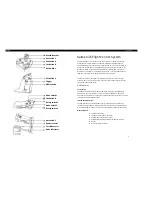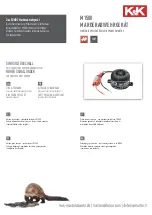
Ports 1-4 ordinarily are cabled to the host PC or the chassis containing the embedded
controller. In this configuration, ports 1-4 form a x16 link, offering the highest throughput.
Ports 5-8 of a PXIe-8399 and ports 1-4 of a PXIe-8394 and PCIe-8398 are always downstream
facing, meaning they may be connected only to additional chassis that are farther from the
host. They ordinarily are connected to a single PXIe-8398 or PXIe-8399.
Ports 2, 3, and 4 of the PXIe-8398 and PXIe-8399 are upstream facing by default, but they
change direction based on cabling. While they are normally used (along with port 1) to form a
x16 upstream link, they may alternatively be connected to additional chassis, and they become
downstream facing ports. There can be only one upstream facing link per chassis, but it may
comprise one, two, or four ports to form a x4, x8, or x16 link.
The following table lists possible configurations.
Module
Configuration 1 Configuration 2 Configuration 3 Configuration 4
PCIe-8398
1-4: x16
1-2: x8
3-4: x8
—
—
PXIe-8394,
PXIe-8398,
PXIe-8399
ports 1-4
1-4: x16
1-2: x8
3-4: x8
1-2: x8
3: x4
4: x4
1: x4
2: x4
3: x4
4: x4
PXIe-8399
ports 5-8
5-8: x16
5-6: x8
7-8: x8
5-6: x8
7: x4
8: x4
5: x4
6: x4
7: x4
8: x4
The flexible port configurations allow you to prioritize bandwidth (Configuration 1), high
fanout (Configuration 4), or a blend of the two.
Compatibility with Host PCs
The BIOS of some host computers may have limited support or no support for extending the
PCI Express fabric. These systems may fail to boot or fail to function correctly.
For more information about host system compatibility with MXI-Express Gen-3 x16 products,
refer to the NI Developer Zone document
Tips to Help You Successfully Use NI MXI-Express
at
ni.com
.
10
|
ni.com
|
MXI-Express Gen-3 x16 User Manual











































